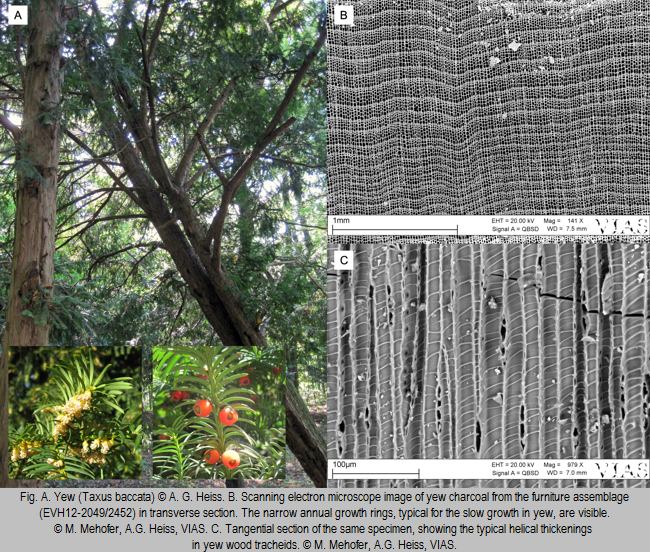In the case of the burnt down Late Antique residence in Byzantine Ephesus (7th–9th c. AD, excavated since 2012 in prov. İzmir, Turkey), a large-scale and thorough interdisciplinary approach was made possible thanks to close cooperation, and discussion, between excavators, conservators, and analysts. In addition to single chunks of charcoal picked up during excavation, also charcoal from bulk soil samples were subjected to analysis. Using a reflected light microscope (magnifications from 100x up to 500x), a reference collection of physical and digital specimens, and various wood identification literature and databases, the still progressing analyses have up to now resulted in species data for roughly 6,500 charcoal fragments.
Identification of charcoal from construction elements charred in situ as well as tiny charcoal fragments adhering to construction nails have proven highly useful for building materials research: The Residence’s main construction timbers were found to be deciduous oak (Quercus sp.), next to a pine from the cluster pine group (either Pinus brutia or P. pinea), as well as fir (Abies sp.) or cedar (Cedrus sp.).
Other conclusions which are already available concern an assemblage of furniture remains, which still bear elaborate carving traces. Near-exclusive presence of walnut (Juglans regia) and yew (Taxus baccata) shows a deliberate choice of high-quality timber for these implements. According to data on both current and past vegetation, the slow-growing yew tree did not grow in the region at the time. Its heavy and prestigious wood (which is laden with symbolism as well) must have been imported from more remote areas, such as the southern Black Sea coast.

Other woods occurring in high numbers, but limited to a few areas within the residence, among them beech (Fagus sp.) and sweet chestnut (Castanea sativa), may have been part of wood panellings, furniture, or implements specific to certain rooms. Other woody species may have served as raw materials for turnery, or simply represent firewood (a few examples will be given). However, these respective hypotheses will become clearer as soon as the charcoal record is complete, and when the resulting data will be brought together with the final interpretation of the archaeological features.
![]() © Andreas G. Heiss
© Andreas G. Heiss
e-mail: andreas.heiss@erbsenzaehler.at
This article should be cited like this: A.G. Heiss, Woodworking Ways in Late Antiquity – Insights on timber use in the Residence in Ephesus, Forum Archaeologiae 78/III/2016 (http://farch.net).